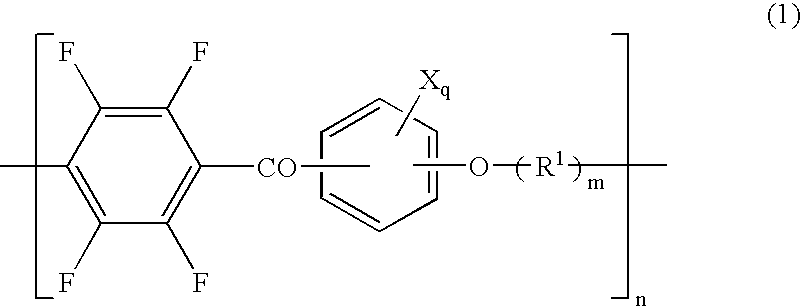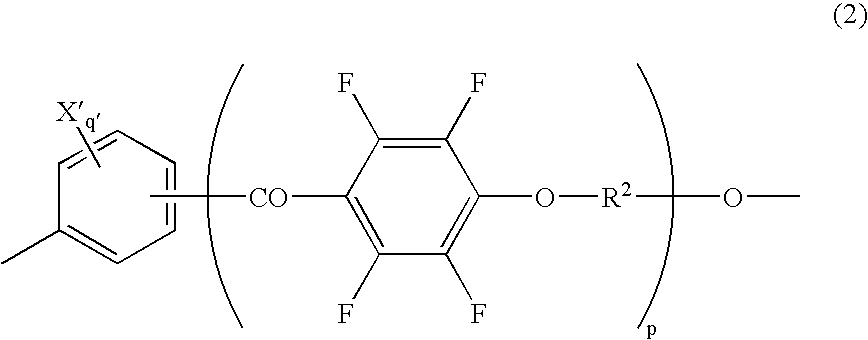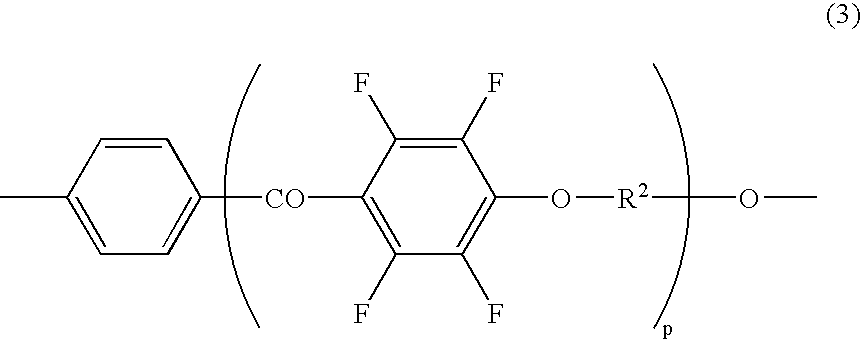Polarizing film, laminated film, and liquid crystal display
a technology of laminated film and liquid crystal display, which is applied in the direction of polarizing elements, instruments, transportation and packaging, etc., can solve the limitation of enlarging the insufficient widthwise length of the conventional polarizing film cannot be obtained, and the limitation of the conventional long film in the widthwise direction, etc. achieve the effect of high optical compensation, increase in screen size, and efficient production
- Summary
- Abstract
- Description
- Claims
- Application Information
AI Technical Summary
Benefits of technology
Problems solved by technology
Method used
Image
Examples
example 1
[0142] A film was unrolled out successively from a roll of film made of polyvinyl alcohol (PVA) having the degree of polymerization of 2400 and having a thickness of 75 μm, a width of 0.3 m and a length of 500 m. The film was stretched by five times in the widthwise direction by a tenter stretching machine at 120° C. Then, the stretched film was immersed in a dye bath of a mixture of iodine and potassium iodine at 30° C. for 1 minute while shrinking in the lengthwise direction was suppressed. Then, the stretched film was immersed in an aqueous solution of 5% potassium iodide at 30° C. for 5 seconds. Then, the stretched film was dried at 45° C. for 7 minutes while fixed so that shrinking of the film was suppressed. The film obtained thus was cut by a width of 1 m. Triacetyl cellulose (TAC) films were laminated on both surfaces of the film through PVA water-soluble adhesive agents. Thus, a TD polarizing film having a three-layer structure of TAC film / TD polarizer / TAC film was obtained...
referential example 1
[0144] A film was unrolled out successively from a roll of film made of a norbornene resin film (ARTON manufactured by JSR CORP.) and having a thickness of 100 pm, a width of 1.2 m and a length of 500 m. The film was stretched by 1.3 times in the lengthwise direction by a roll type longitudinal stretching method at 170° C. Then, the stretched film was cut by a width of 1 m. Thus, an (MD) retardation film was obtained and rolled up. The film had Re of 100 nm. The Re distribution (variation: difference between a maximum value and a minimum value, this rule applies hereunder) in the widthwise direction was 5 nm. The slow axis distribution (in the lengthwise direction) was 1 degree.
[0145] Incidentally, Re (and Rz which will be described later) was calculated on the basis of refractive indices measured by KOBRA-21ADH manufactured by OJI SCIENTIFIC INSTRUMENTS. In the following description, refractive indices were measured in the same manner.
referential example 2
[0146] A (TD) retardation film was obtained in the same manner as in Referential example 1 except that an ARTON film was stretched by 1.5 times in the width direction by a tenter stretching machine at 175° C. The retardation film was rolled up. The film had Re of 100 nm. The Re distribution in the widthwise direction was 8 m. The slow axis distribution (in the widthwise direction) was 2.5 degrees.
PUM
| Property | Measurement | Unit |
|---|---|---|
| width | aaaaa | aaaaa |
| width | aaaaa | aaaaa |
| width | aaaaa | aaaaa |
Abstract
Description
Claims
Application Information
 Login to View More
Login to View More - R&D
- Intellectual Property
- Life Sciences
- Materials
- Tech Scout
- Unparalleled Data Quality
- Higher Quality Content
- 60% Fewer Hallucinations
Browse by: Latest US Patents, China's latest patents, Technical Efficacy Thesaurus, Application Domain, Technology Topic, Popular Technical Reports.
© 2025 PatSnap. All rights reserved.Legal|Privacy policy|Modern Slavery Act Transparency Statement|Sitemap|About US| Contact US: help@patsnap.com



